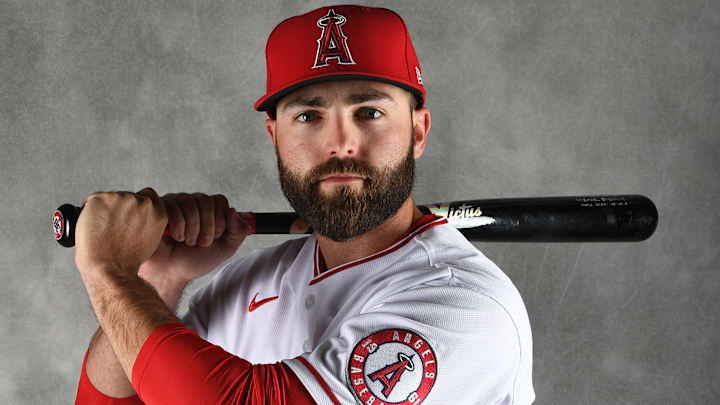
Top LA Angels prospect Michael Stefanic is absolutely killing it right now for the Salt Lake Bees.
Long one of the team’s most slept on prospects due to being an undrafted player who lacked power, Stefanic has quietly dominated the minors since 2018, and so far, this year is no exception.
The time is now for the LA Angels to finally give Michael Stefanic a shot in the majors.
Through 13 games and 53 plate appearances (at the time of writing) this season, Michael Stefanic has further cemented himself as the top hitter in the LA Angels farm system and one of the best in all of Triple-A as he’s currently batting .354 and is getting on base at a .415 clip.
For context, that batting average is the 13th best in all of Triple-A. Restrict this to players with at least 30 PAs and it rises to 10th. Restrict it even further to players with no major league experience and suddenly it becomes the fifth best in the league.
As for that OBP, it clocks in at 20th in the league, 16th among players with at least 30 PAs, and fifth among pure minor leaguers.
Pssssst... Michael Stefanic is 4-for-4 today pic.twitter.com/6Lz5X9y3YU
— Salt Lake Bees (@SaltLakeBees) April 9, 2022
Perhaps most impressive of all, however, is Stefanic’s elite plate discipline. He’s only struck out three times this year. Three. That’s good for a 5.6% strikeout rate, which just so happens to be the best in the Pacific Coast League and second best in all of Triple-A behind the White Sox’s Carlos Perez.
Though his power remains low with just a .375 slugging percentage, there are two main caveats there.
First, he slugged .505 with the Bees last year and clubbed 16 home runs with a ridiculous 20.5% HR/FB ratio so the ability is most definitely there. And second, the Angels don’t need more power hitters with Shohei Ohtani, Mike Trout, Anthony Rendon, and Jared Walsh already taking that role. What they need is an ideal leadoff man who makes solid contact, gets on base and doesn’t strikeout.
Keep in mind, none of this is a new development. This performance is coming hot on the heels of a 2021 season in which Stefanic was again one of the top hitters in Triple-A, slashing .334/.408/.505 with a miniscule 13.5% K rate. He was also playing out of his mind in Spring Training this year when he slashed .385/.529/.577 across 14 games with the big-league club.
